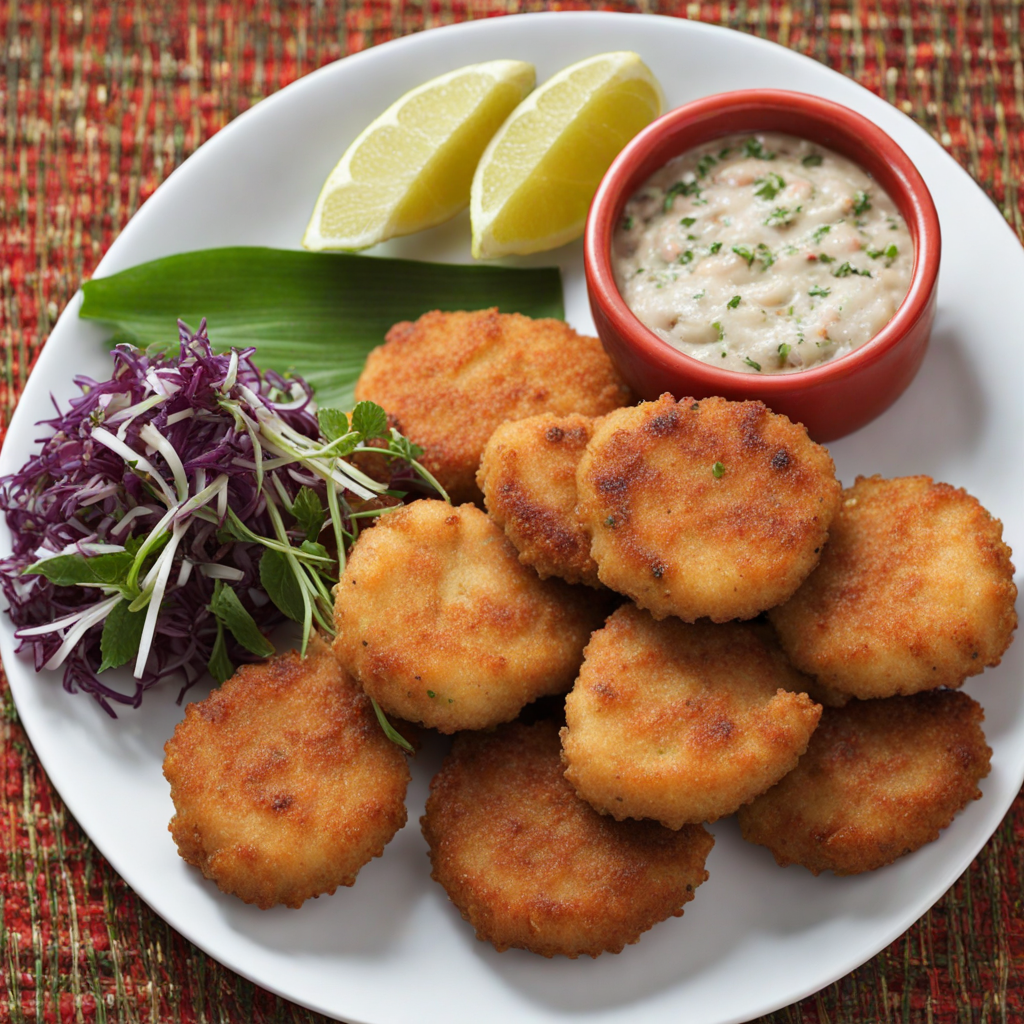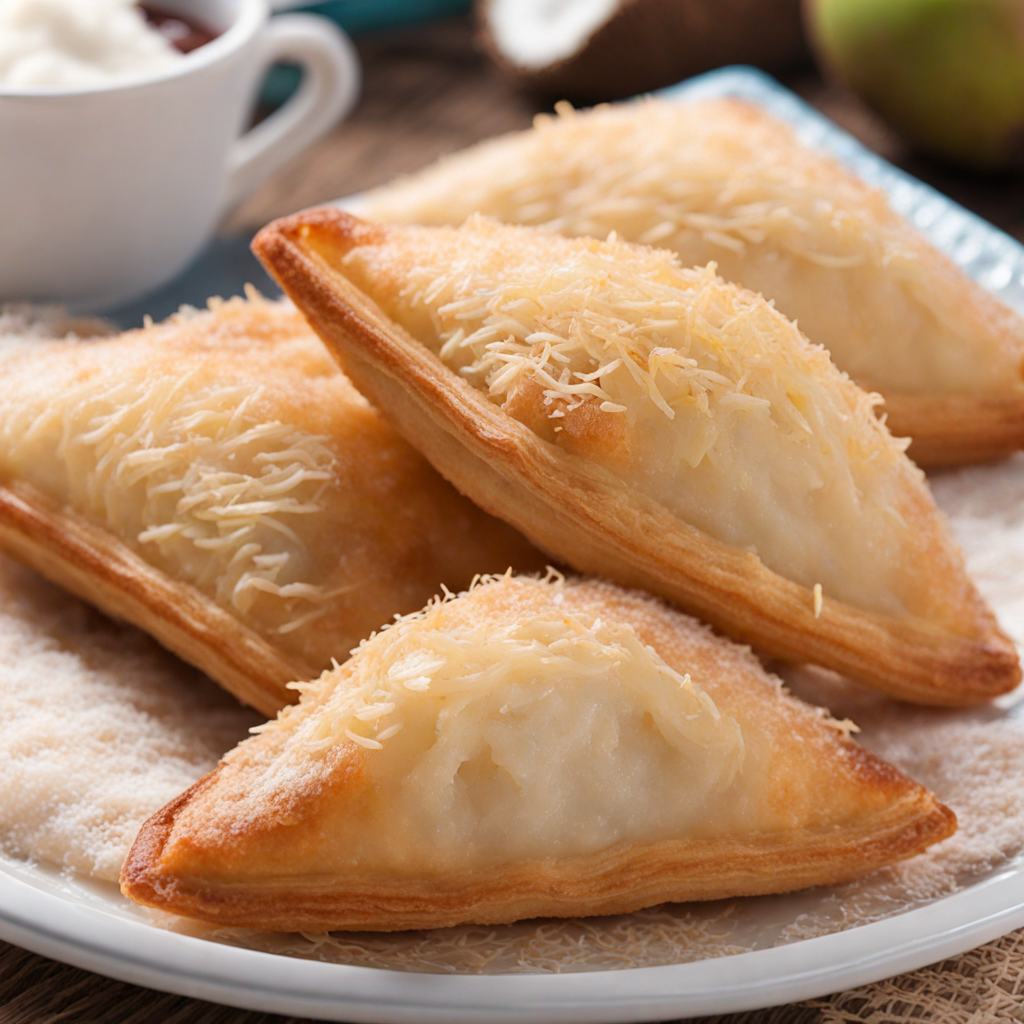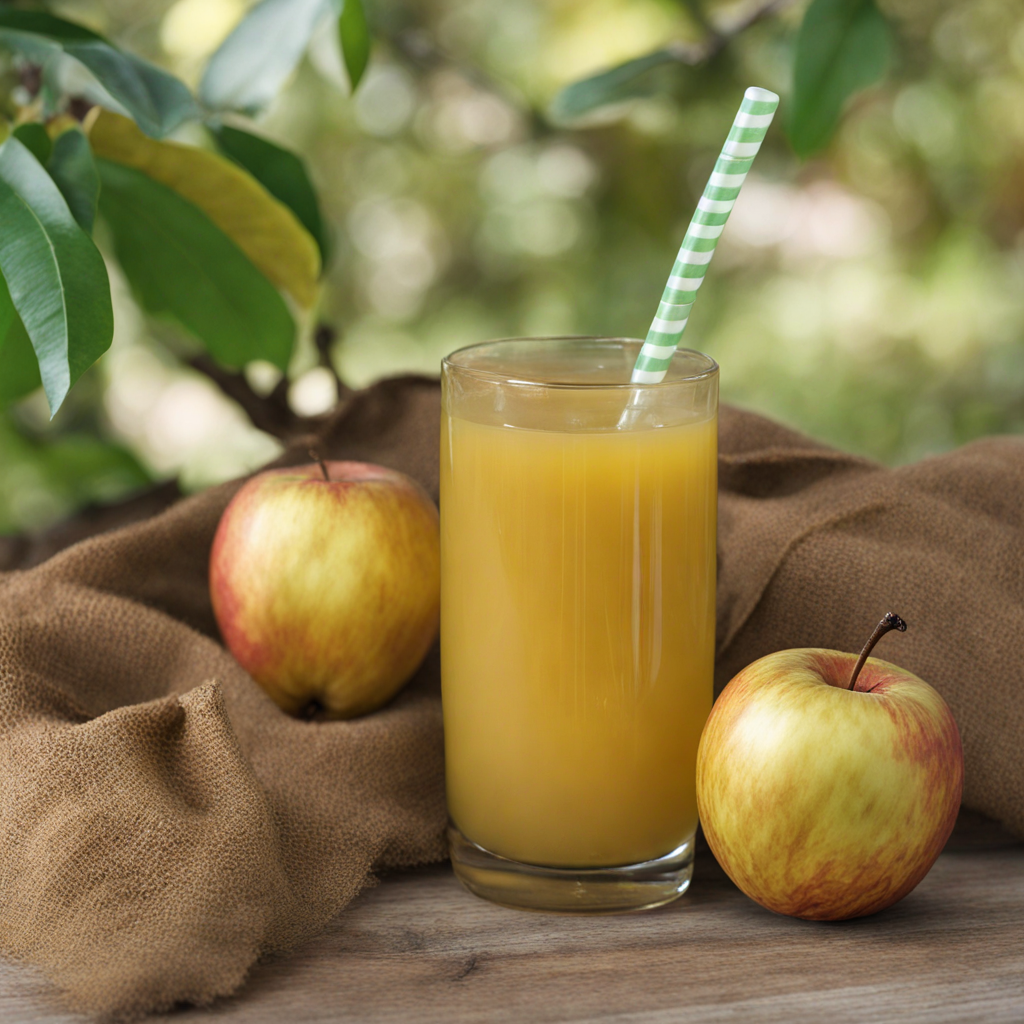Johnny Cake
Johnny Cake is a delightful culinary treasure from Saint Lucia that embodies the island's rich cultural heritage. This fried or baked flatbread is made primarily from cornmeal, which gives it a wonderfully textured and slightly sweet flavor. The dough is typically mixed with water, salt, and sometimes baking powder, resulting in a simple yet satisfying base that can be enjoyed on its own or as a side dish. The golden-brown exterior is crispy, while the inside remains soft and warm, making it an irresistible treat for anyone exploring Caribbean cuisine. In Saint Lucia, Johnny Cake is often enjoyed as a breakfast item or a snack, and it pairs beautifully with a variety of accompaniments. Locals love to serve it alongside savory dishes such as stews, curries, or fried fish, where the bread absorbs the delicious sauces, enhancing each bite. Additionally, it can be topped with butter or honey for a sweet twist, showcasing its versatility and appeal to both sweet and savory palates. This adaptability makes Johnny Cake a staple in many households, where it’s often featured at family gatherings and celebrations. Beyond its delightful taste, Johnny Cake also carries a sense of nostalgia and community. Many families pass down their own recipes, incorporating unique twists or secret ingredients that reflect their personal touch. As you take a bite of this comforting bread, you’re not just savoring a new flavor, but also experiencing a piece of Saint Lucian culture and tradition. Each mouthful offers a warm connection to the island's history, making Johnny Cake a must-try for anyone eager to explore the rich tapestry of Caribbean flavors.
How It Became This Dish
The History of Johnny Cake in Saint Lucia: A Culinary Journey Johnny cake, a beloved staple in Saint Lucian cuisine, is a dish that embodies the island’s rich cultural tapestry, blending influences from indigenous peoples, European colonizers, and African heritage. Its origins and evolution are closely tied to the history of the Caribbean itself, offering a fascinating glimpse into the region's culinary development. Origins The term "johnny cake" is believed to originate from the English word "journey cake," which referred to a simple flatbread that was easy to carry for long journeys. This name reflects the dish's practicality, as it could be made with basic ingredients and cooked over an open fire. The earliest forms of johnny cake likely emerged from the indigenous peoples of the Caribbean who utilized cornmeal, a staple food in their diet. As colonization swept through the Caribbean in the 17th century, European settlers introduced wheat flour and various cooking techniques. The blend of native cornmeal recipes with European baking methods gave rise to the johnny cake we know today. In Saint Lucia, it became a popular food among enslaved Africans, who adapted the dish to suit their tastes and available ingredients, incorporating elements of their culinary traditions. Cultural Significance Johnny cake holds a significant place in the hearts and homes of Saint Lucians. It is more than just a food item; it is a symbol of resilience, resourcefulness, and cultural identity. Traditionally, it is made with flour, cornmeal, baking powder, salt, and water, though variations exist that include ingredients like coconut milk, sugar, or spices, reflecting local preferences and available resources. In Saint Lucian households, johnny cake is often served alongside a variety of dishes, such as stews, soups, and fried fish. Its versatility allows it to be enjoyed at any meal, whether breakfast, lunch, or dinner. Families often gather to enjoy this dish together, creating a sense of community and continuity. Johnny cake also plays a role in various cultural and festive occasions. It is often featured at celebrations, such as weddings, parties, and community gatherings, acting as a bridge between generations. The preparation and sharing of johnny cake can become a communal activity, reinforcing social bonds and cultural traditions. Development Over Time As the cultural landscape of Saint Lucia evolved, so too did the recipe for johnny cake. While the basic ingredients remained relatively unchanged, the method of preparation has diversified. Traditionally, johnny cake was cooked on a griddle over an open flame, but modern conveniences have led to the use of ovens and stovetops. This adaptation reflects the changing lifestyles of Saint Lucians, who balance tradition with contemporary culinary practices. Moreover, the rise of tourism in Saint Lucia has introduced johnny cake to a broader audience. Tourists seeking authentic culinary experiences often encounter johnny cake at local restaurants, food stalls, and markets. This exposure has led to a renewed appreciation for the dish, with chefs experimenting with new flavors and presentations while respecting its traditional roots. Some have even created gourmet versions, infusing the classic johnny cake with local ingredients such as herbs, spices, and tropical fruits. Regional Variations While johnny cake is particularly associated with Saint Lucia, variations of the dish can be found throughout the Caribbean. In Jamaica, for example, a similar dish known as "festival" is sweetened and fried, often served with fried fish. In the Bahamas, "Johnnycake" is a cornbread-style dish that features a slightly different texture and flavor profile. These regional adaptations highlight the interconnectedness of Caribbean culinary traditions, as each island infuses its unique cultural influences into the dish. Contemporary Appreciation In recent years, there has been a surge of interest in local and sustainable foods across the Caribbean, and johnny cake is no exception. Many chefs and food enthusiasts are revisiting traditional recipes, sourcing local ingredients, and emphasizing the importance of food heritage. This movement has also sparked discussions about food sovereignty and the preservation of culinary traditions in the face of globalization. Social media platforms have played a crucial role in the resurgence of interest in johnny cake. Food bloggers and influencers often share recipes, cooking tips, and personal stories related to the dish, further elevating its status in contemporary culinary culture. This digital engagement not only connects younger generations to their culinary heritage but also introduces johnny cake to an international audience eager to explore Caribbean cuisine. Conclusion Johnny cake is more than just a food item in Saint Lucia; it is a cultural artifact that tells the story of the island's history, resilience, and communal spirit. Its evolution from indigenous flatbreads to a beloved dish enjoyed by families and tourists alike illustrates the dynamic nature of Caribbean culinary traditions. As Saint Lucians continue to celebrate and innovate around this classic dish, the legacy of johnny cake endures, ensuring that it remains a cherished part of the island's identity for generations to come. In a world that often rushes towards the new and the novel, the story of johnny cake serves as a reminder of the importance of community, history, and the simple joys of sharing a meal. As families gather to enjoy this versatile dish, they not only nourish their bodies but also honor their heritage, forging connections that transcend time and place. Whether enjoyed fresh off the griddle or dressed up for a modern dining experience, johnny cake continues to be a delicious testament to the rich culinary history of Saint Lucia.
You may like
Discover local flavors from Saint Lucia







